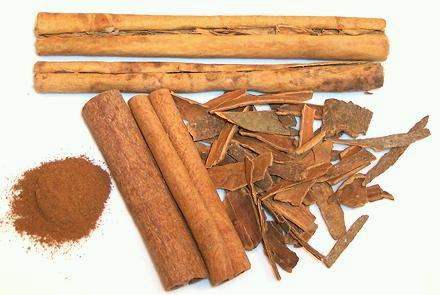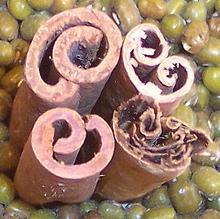 Cinnamon - [Cinnamonum verum (zeylanicum)]
Cinnamon - [Cinnamonum verum (zeylanicum)]
Cinnamon is native to Sri Lanka (Ceylon) and the Malabar coast of India but now grown also in the West Indies and South America. Cassia is native to Burma and is grown in China, Vietnam, and Indonesia with Vietnamese (Cinnamomum loureiroi) considered the highest quality. The aromatic bark of both these trees is peeled and dried for use as a spice. The two are easily confused and imperfectly interchangeable, depending on the recipe.
Shown are long Cinnamon sticks (top), standard U.S. Cassia sticks (center), broken Cinnamon common in Indian groceries (right) and ground Cinnamon/Cassia (left). Preference for and availability of these spices is a mater of region. Cassia predominates in the U.S. but is difficult to find south of the Mexican border, in Europe, or South Asia, where Cinnamon predominates. China and Southeast Asia use Cassia almost exclusively. Cinnamon generally has a cleaner, sweeter flavor and Cassia has a touch of bitterness.
More on Laurels.
